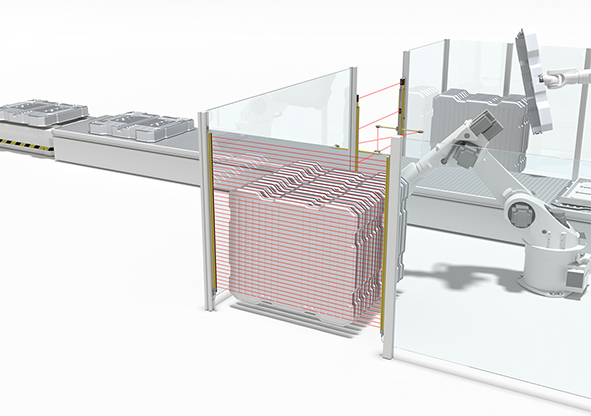Assembly line using e-mobility as an example
On assembly lines, components and products are manufactured through successive assembly processes. Depending on requirements, everything from small, partially automated lines to fully automated lines are used.
In the area of e-mobility, the installation of battery cells, modules and packs is usually fully automated. The "tracking and tracing" of the components, transport- and logistics solutions for material supply of the assembly cells and the safety of the work stations determine the requirements on the sensors.
Our components guarantee smooth processes and ensure machine safety. Typical areas of use are code reading and identification for the traceability, object detection for automation as well as access guarding at the assembly cells.













